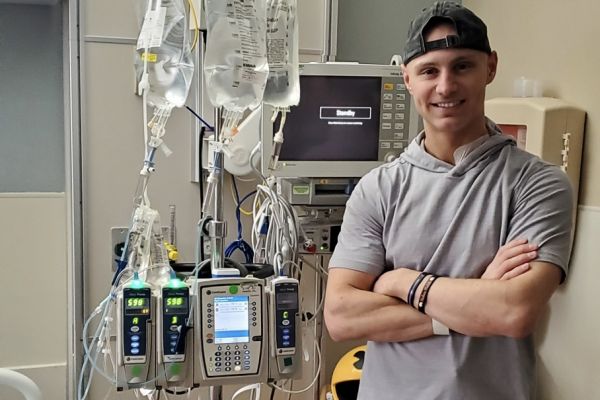Doctors and scientists don’t know the exact cause of testicular cancer but agree there are several factors that may increase the risk of a diagnosis.
In America, testicular cancer is the most common cancer affecting young men and teens, between the ages of 15 and 35. Fortunately, it’s still quite rare compared to other types of cancer. It is also highly treatable and usually affects only one testicle. More than treatable, it’s highly curable.
An undescended testicle is the most common risk
During fetal development, boys’ testicles form in the abdomen and typically descend to the scrotum by the time the baby is born. Sometimes, however, one or more testicles fail to descend, a condition called cryptorchidism. About 3-5% of boys are born with this condition and it’s more common among boys who were born prematurely.
Even if the testicle is surgically attached to the scrotum after birth, the risk of testicular cancer is somewhat higher for males with a testicle that never descended than for those whose testes descend normally.
Family history, age, other factors play a role
People with a family history of testicular cancer, such as a parent or sibling, are at an increased risk for also being diagnosed. However, this relates only to a small number of cases. Most who are diagnosed don’t have a family history of the disease. Other risk factors include:
- Age. Testicular cancer affects males from infants to seniors, but about half of cases are diagnosed between the ages of 20 and 34.
- Race and Ethnicity. White men are diagnosed about four to five times more than Black or Asian-American men. The risk for testicular cancer is highest for men living in the United States and Europe, and lowest among men living in Africa and Asia.
- HIV infection. Infection with the human immunodeficiency virus (HIV), particularly AIDS, increases the risk of testicular cancer.
- Diet. A few studies suggest that men who eat a lot of dairy products – and whose diets are high in fat and red meat, or low in fruits and vegetables – may also be at an increased risk for testicular cancer.
Urologic Cancer Risk Assessment
Complete our risk assessment form to determine if you are at high risk for testicular cancer.
What can you do?
Self-examination is the most important thing you can do to detect testicular cancer early. If you feel a mass or something abnormal, you should pay attention and get checked right away. It can save your life. Some experts recommend monthly self-examination for any pain, swelling or lumps in the groin area starting at age 16 and continuing into your mid-30s.


